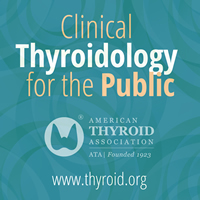Background There is no consensus in the literature on the interpretation of single antigen bead (SAB) positive for a specific HLA antibody. Methods To inform the debate, we studied the relationship between various SAB positivity algorithms and the impact of resulting donor-specific HLA antibody (DSA) positivity on long-term kidney graft survival in 3237 deceased-donor transplants. Results First, we showed that the interassay variability can be greatly reduced when working with signal-to-background ratios instead of absolute MFIs. Next, we determined pretransplant DSA using various MFI cut-offs, signal-to-background ratios (STBR) and combinations thereof. The impact of the various cut-offs was studied by comparing the graft survival between the DSA-positive and DSA-negative groups. We did not observe a strong impact of various cut-off levels on 10-year graft survival. A stronger relationship between the cut-off level and 1-year graft survival for DSA-positive transplants was found when using STBR, most pronounced for the bead of the same HLA-locus with lowest MFI taken as background. Conclusions With respect to pretransplant risk stratification, we propose a SBTR-6 (using the bead of the same HLA-locus with lowest MFI as background) cut-off of 15 combined with an MFI cut-off of 500, resulting in 8% and 21% lower 1- and 10-years graft survival, respectively, for 8% DSA positive transplants. Corresponding author: E-mail address: H.G.Otten@umcutrecht.nl. Corresponding author permanent address: Laboratory of Translational Immunology, University Medical Center Utrecht, F.03.821, P.O. Box 85500, 3508 GA Utrecht, The Netherlands. Tel.: +31 88 75 57680 Disclosure The authors of this manuscript have no conflicts of interest to disclose. Authorship Participated in research design: BW, EK, AD, LP, HO Participated in writing of the paper: BW, EK, IJ, WA, LH, AvZ, MV, MLB, BH, AL, LB, CR, CV, ItB, AH, SH, DR, FC, HO Participated in the performance of the research: BW, EK, AD, LP Contributed new reagents or analytic tools: BW, EK, IJ, WA, AvdM, LH, MCB, ES, CH, FvR, AvZ, MV, MLB, AD, LP, MS, JS, BH, AL, LB, CR, MT, CV, LW, EvD, MG, MC, FvI, AN, NL, WS, KvdP, NvdW, ItB, FB, AH, PvdB, JdF, MB, SH, DR, FC, HO Participated in data analysis: BW, EK, HO Copyright © 2018 Wolters Kluwer Health, Inc. All rights reserved.
https://ift.tt/2P7LDbI



